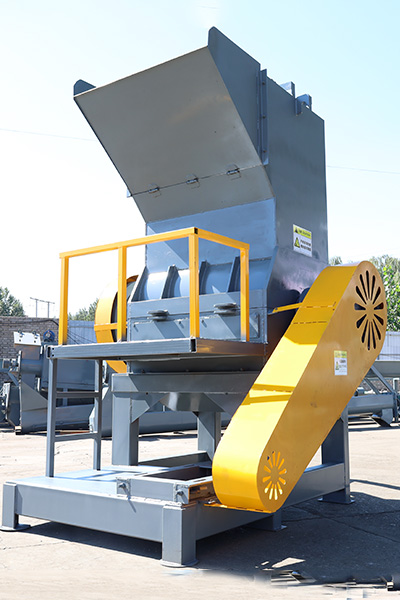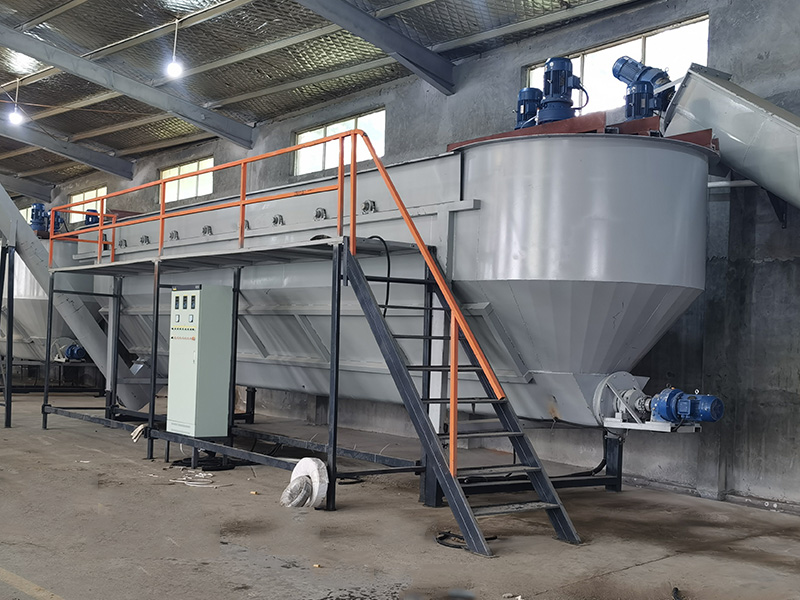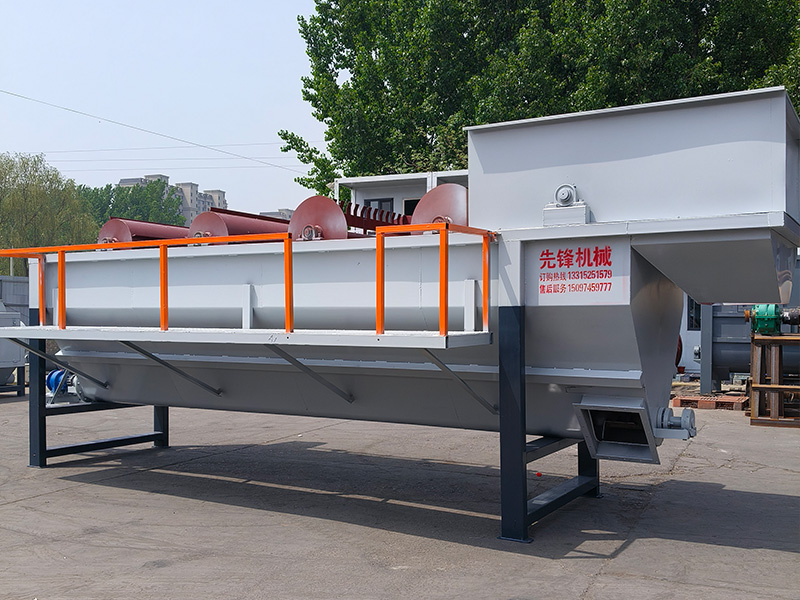How to Troubleshoot Common Crusher Issues: A Comprehensive Guide for Efficient Operations
How to Troubleshoot Common Crusher Issues: A Comprehensive Guide
Crushers are vital pieces of machinery in various industries, playing a crucial role in processes such as mining, construction, and recycling. However, like any other mechanical equipment, they can encounter issues that hinder performance. Understanding how to troubleshoot these common problems can save time, reduce downtime, and enh
Jun 28,2025

How to Troubleshoot Common Crusher Issues: A Comprehensive Guide
Crushers are vital pieces of machinery in various industries, playing a crucial role in processes such as mining, construction, and recycling. However, like any other mechanical equipment, they can encounter issues that hinder performance. Understanding how to troubleshoot these common problems can save time, reduce downtime, and enhance overall productivity. In this guide, we will delve into effective strategies for identifying and resolving various crusher issues, ensuring your operations run seamlessly.
A Table of Contents for Effective Troubleshooting
- Understanding Crusher Mechanics
- Common Crusher Issues
- Identifying Crusher Problems
- Troubleshooting Strategies
- Preventive Maintenance Tips
- Troubleshooting by Crusher Type
- When to Call a Professional
- Conclusion
- FAQs
Understanding Crusher Mechanics
To effectively troubleshoot crusher issues, it is essential to grasp the fundamental mechanics of these machines. Crushers typically consist of several key components, including the feed hopper, crushing chamber, discharge conveyor, and drive mechanism. The **crushing process** involves reducing large rocks or materials into smaller, manageable sizes, which requires understanding how different crusher types function, such as jaw crushers, cone crushers, and impact crushers.
Each crusher operates under specific principles, which influence how they should be maintained and repaired. For instance, jaw crushers use compressive force, while cone crushers apply both compressive and impact forces. Familiarizing yourself with these mechanics will aid in identifying the root cause of any issues that arise.
Common Crusher Issues
Crushers can face a myriad of problems that can affect their efficiency and functionality. Below are some of the most common issues encountered in crushing machinery:
1. Reduced Output or Throughput
A drop in output can significantly impact productivity. It may arise due to various factors, including clogged feed hoppers, worn-out liners, or issues with the drive mechanism.
2. Excessive Vibration
Excessive vibration can indicate misalignment, imbalance, or worn bearings. It can lead to further mechanical failures if not addressed promptly.
3. Overheating
Overheating is a sign of poor lubrication, excessive load, or mechanical failure. It can cause severe damage if not monitored and resolved quickly.
4. Blockages and Jams
Blockages can occur due to oversized materials, foreign objects, or improper feed rates. Clearing these obstructions is essential for maintaining continuous operation.
5. Noise and Unusual Sounds
Strange noises can signify issues with bearings, loose components, or worn-out parts. Identifying the source of the noise should be a priority to prevent further damage.
Identifying Crusher Problems
The first step in troubleshooting any machine is identifying the problem accurately. Here are some steps to guide you through this process:
1. Monitor Performance Metrics
Regularly check performance metrics such as output rates, energy consumption, and operational hours. Any deviations from the norm can indicate underlying issues.
2. Conduct Visual Inspections
Perform regular visual inspections of your equipment. Look for signs of wear, misalignment, or loose components that could lead to performance issues.
3. Listen for Abnormal Sounds
Pay attention to the sounds your crusher makes. Unusual noises can provide crucial clues about mechanical problems.
4. Check for Vibration Patterns
Use vibration analysis tools to assess the machine's condition. Excessive or irregular vibration patterns can pinpoint specific issues.
Troubleshooting Strategies
Once the problem has been identified, it is time to implement a strategy for resolution. Here are some effective troubleshooting strategies:
1. Adjusting Feed Rates
If reduced output is observed, experiment with adjusting the feed rates. Ensure that the materials being fed into the crusher are within the specified size and weight limits.
2. Lubrication and Maintenance
Regular lubrication is essential to prevent overheating and excessive wear. Follow the manufacturer's recommendations for lubrication intervals and types of lubricants.
3. Realignment and Balancing
If excessive vibration is detected, check for misalignment and balance in the crusher components. Realigning and balancing the machinery can significantly reduce vibration levels.
4. Clearing Blockages
For blockages, ensure that the feed material is appropriately sized. Implement a clearing process to remove any obstructions without causing damage to the equipment.
5. Component Replacement
In cases of severe wear or damage, consider replacing worn components. Monitor the condition of critical parts such as bearings, liners, and belts to preemptively address wear issues.
Preventive Maintenance Tips
Preventive maintenance is crucial in ensuring the longevity and efficiency of your crushing machinery. Here are some best practices:
1. Create a Maintenance Schedule
Develop a comprehensive maintenance schedule that outlines regular inspections, lubrication intervals, and component checks.
2. Train Operators
Ensure that all operators are trained in proper machine handling and maintenance protocols to minimize the risk of operational errors.
3. Use High-Quality Parts
When replacing parts, opt for high-quality components that meet or exceed manufacturer specifications. This practice reduces the likelihood of future issues.
4. Keep Records
Maintain detailed records of maintenance activities, repairs, and performance metrics to track the machine's health over time.
5. Invest in Upgrades
Consider investing in modern technology and upgrades that can improve efficiency and reduce the likelihood of common issues.
Troubleshooting by Crusher Type
Different types of crushers may encounter specific issues based on their design and function. Here’s a brief overview of troubleshooting common problems based on crusher types:
1. Jaw Crushers
Common issues include jaw plate wear and improper spacing between the jaws. Regularly inspect and replace jaw plates to maintain optimal performance.
2. Cone Crushers
Cone crushers often face issues related to hydraulic system failures. Monitor hydraulic fluid levels and check for leaks to prevent operational failures.
3. Impact Crushers
Impact crushers can suffer from rotor imbalance and wear on blow bars. Regularly inspect and replace worn blow bars to ensure efficient operation.
4. Screening Equipment
For screening machines, clogged screens and misaligned decks are common issues. Ensure that the screens are clean and properly aligned to maintain flow.
When to Call a Professional
While many crusher issues can be addressed through basic troubleshooting, some situations require professional intervention:
1. Persistent Problems
If issues persist despite your efforts to troubleshoot, it may be time to call a professional technician who can provide advanced diagnostics and solutions.
2. Major Repairs
For extensive repairs or component replacements, engaging a professional service can ensure the job is done correctly and efficiently.
3. Safety Concerns
If you encounter any safety hazards during troubleshooting, do not hesitate to seek professional help to address the situation safely.
Conclusion
Troubleshooting common crusher issues is crucial for maintaining productivity and efficiency in your operations. By understanding the mechanics of your equipment, identifying problems, and implementing effective strategies, you can ensure smooth and continuous operation. Regular preventive maintenance, training, and timely interventions play a significant role in minimizing downtime and enhancing machine longevity.
FAQs
1. What are the most common problems with crushers?
Common problems include reduced output, excessive vibration, overheating, blockages, and unusual noises.
2. How can I improve the performance of my crusher?
Regular maintenance, operator training, and timely replacements of worn components can significantly improve performance.
3. When should I replace parts in my crusher?
Parts should be replaced when they show signs of excessive wear, damage, or when performance metrics indicate a decline.
4. How often should I conduct maintenance on my crusher?
A comprehensive maintenance schedule should be developed, typically recommending inspections every few weeks and lubrication based on the manufacturer's guidelines.
5. Can I troubleshoot a crusher issue on my own?
Many minor issues can be troubleshot independently with the right knowledge and tools, but professional assistance may be required for complex problems or safety concerns.
TAG:
Contact Us
E-mail :
Phone/WhatsApp:
Address:
Shunping, Baoding City, Hebei Province









